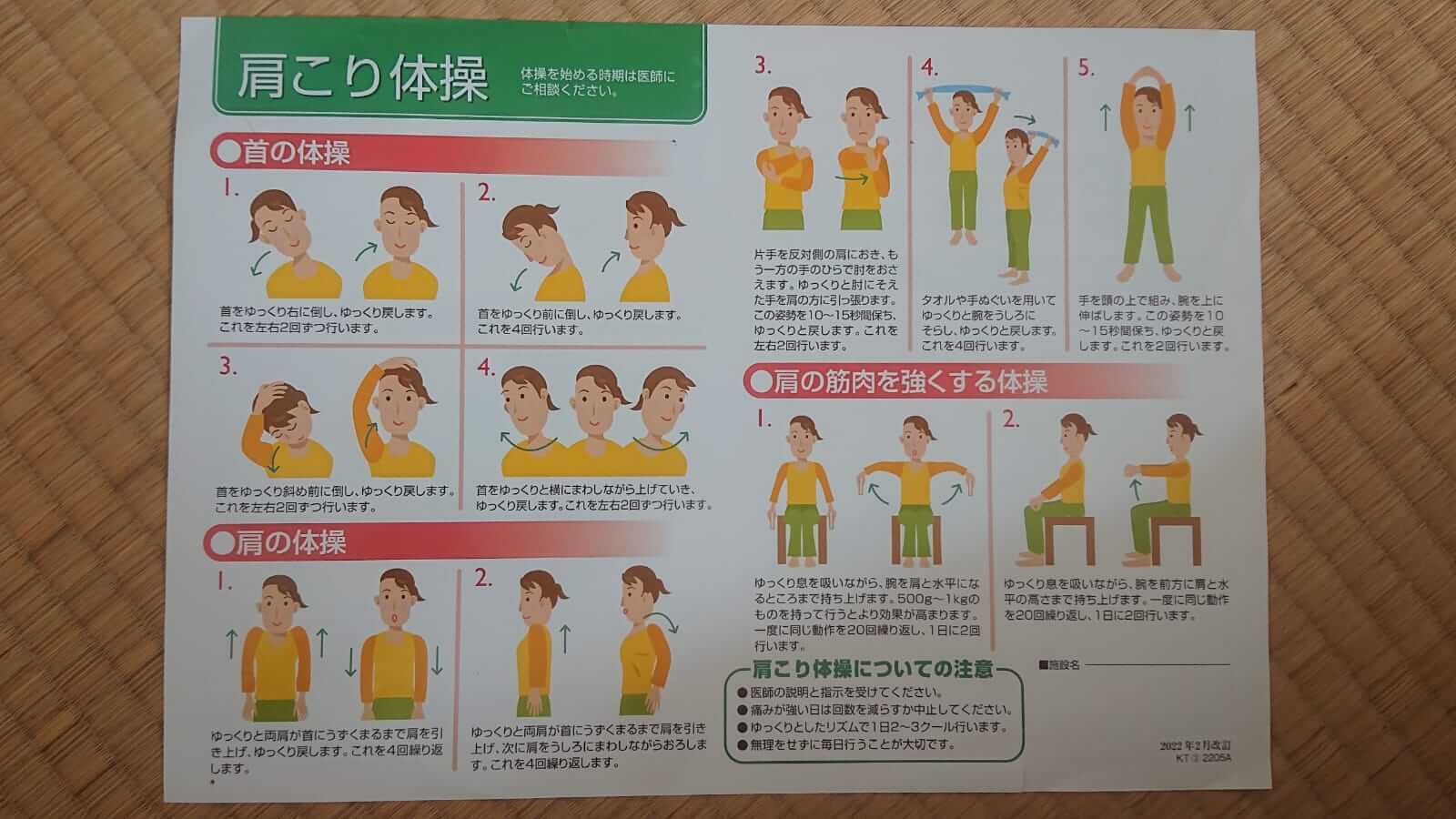Herniated Disc Exercises: Finding Relief Through Movement and Excercise
Dealing with a herniated disc can be a painful and challenging experience, but incorporating targeted exercises into your routine can make a significant difference in your recovery journey. In this article, we’ll delve into the world of herniated disc exercises, exploring the exercises that can help alleviate discomfort, improve flexibility, and strengthen the surrounding muscles. Let’s take a closer look at how you can find relief through movement.
Understanding Herniated Discs
Before we dive into the exercises, it’s essential to have a clear understanding of what a herniated disc is and how it can impact your daily life. A herniated disc occurs when one of the rubbery cushions (discs) between the individual bones (vertebrae) in your spine ruptures or slips out of place. This displacement can lead to irritation of nearby nerves, resulting in pain, numbness, or weakness in the affected area.
The Role of Exercise in Recovery
Exercise plays a crucial role in managing the symptoms of a herniated disc. While bed rest might seem like the best option, it can actually lead to stiffness and muscle weakening, making the condition worse in the long run. Engaging in the right exercises can improve blood circulation, reduce inflammation, and promote healing by increasing the flow of nutrients to the affected area.
Core Strengthening
A strong core can provide essential support to the spine, helping to alleviate pressure on the herniated disc.
Planks are a fantastic exercise to target your core muscles. Begin by lying face down, then lift your body using your forearms and toes, keeping your body in a straight line. Hold this position for a few seconds, gradually increasing the duration as your strength improves.
Flexion Exercises
Flexion exercises focus on gently stretching the spine forward, which can help relieve pressure on the herniated disc.
Knee-to-chest stretches are a simple yet effective way to achieve this. Lie on your back, bring one knee toward your chest, and hold it there using your hands. Remember to keep your other leg straight. Hold the stretch for about 20 seconds and then switch legs.
Extension Exercises
Extension exercises involve arching the spine slightly backward, which can counteract the forward-slouching posture many of us adopt. The cat-cow stretch is a classic yoga move that accomplishes this. Get on your hands and knees, and alternate between arching your back like a stretching cat and dipping your back like a cow. This movement can help improve the flexibility of your spine and reduce discomfort.
Aerobic Activities
Engaging in low-impact aerobic exercises can also contribute to your recovery. Activities like brisk walking, swimming, or stationary cycling promote cardiovascular health while minimizing the impact on the spine. These exercises enhance blood flow and circulation, aiding in the healing process.
Lifestyle Adjustments
While exercises are crucial, making certain lifestyle adjustments can further expedite your recovery. Maintaining proper posture throughout the day, avoiding heavy lifting, and using ergonomic chairs can all contribute to reducing strain on your spine.
Consulting a Professional
It’s important to note that not all exercises are suitable for everyone, and individual conditions vary. Before embarking on any exercise routine, especially if you have a herniated disc, it’s recommended to consult a medical professional or a physical therapist. They can assess your condition, provide personalized recommendations, and guide you through exercises that are safe and effective for your specific needs.
Incorporating herniated disc exercises into your daily routine can be a game-changer in your recovery journey. From core-strengthening planks to gentle stretches and aerobic activities, these exercises promote healing, flexibility, and overall well-being.
Remember, patience is key – gradual progress is more important than pushing yourself too hard. By taking a proactive approach to your recovery and working closely with healthcare experts, you can pave the way for a stronger, healthier spine and a more comfortable life.

Knowledge of stiff shoulders
Supervised by Professor Emeritus of Gunma University Kenji Takagishi, Director Emeritus of Sada Koseikai Sada Hospital.
What are stiff shoulders?It is a symptom name such as extremely unpleasant pain or discomfort, such as stiff muscles from the back neck to the shoulders and back.
What are the symptoms?
The muscles that run from the head to the shoulders feel heavy, tense, painful, or stiff. The muscle “stiffness” may or may not be felt. It hurts, stretched
and heavy.
What is the cause of stiff shoulders?
There are two types of stiff shoulders: “essential stiff shoulders,” in which there is no underlying disease that causes stiff shoulders, and “symptomatic stiff shoulders,” which are derived from underlying diseases.
“Symptomatic stiff shoulders” are caused by many diseases such as orthopedic diseases such as cervical spine and shoulder joints, visceral diseases, eye diseases, otitis media, sinusitis, temporomandibular disorders, and psychiatric diseases. “Essential stiff shoulders” is when there is no special underlying disease, and it is likely to occur due to overwork, lack of exercise, poor posture, mental tension, cold weather, etc.
What is the treatment for stiff shoulders?
Due to the extremely wide variety of causes of stiff shoulders, in the case of “symptomatic stiff shoulders,” in which the pathology that causes or causes them is clear, treatment for the primary disease is important and must be prioritized. However, there are quite a few “essential stiff shoulders” that have no underlying disease that causes them.
In such cases, oral administration of non-steroidal anti-inflammatory analgesics and external preparations such as patches and ointments are used. In addition, the concomitant use of muscle relaxants, circulation promoters, tranquilizers, etc. is also effective. In addition to drug therapy, moderate exercise, exercise therapy,
Hyperthermia massage using heat back and ultrashort waves and muscle relaxation training such as stretching are also effective. In particular, proper gymnastics and exercise encourage spontaneous contraction and relaxation of muscles, which increases muscle metabolism and removes pain-causing substances from the muscles, making them more effective than receiving passive massage.
It is said that there is In addition, it is said that muscle weakness around the head and shoulders also leads to stiff shoulders, so it is important to consciously move the muscles and prevent muscle weakness.
The main muscles related to stiff shoulders are thought to exist from the neck to the shoulders and around the scapula as shown in the figure.

Gymnastics for stiff shoulders
Exercises for the neck: 1 and 2
Slowly tilt your head to the right and slowly return it. Do this twice on each side.
Slowly bend your head forward and back slowly. Do this 4 times.
Exercises for the neck: 3 and 4
Slowly tilt your head diagonally forward and slowly return it. Do this twice on each side.
Slowly turn your head to the side while raising it, then slowly return it. Do this twice on each side.
Gymnastics for shoulders: 1
Slowly pull your shoulders up until they crouch against your neck, then slowly bring them back down. Repeat this 4 times.
↑
Place one hand on the opposite shoulder and hold the elbow with the palm of the other hand. Slowly pull the hand on the elbow toward the shoulder. Hold this position for 10-15 seconds and slowly return. Do this twice on each side.
Using a towel or washcloth, slowly bend your arm back and slowly bring it back. Do this 4 times.
Exercises to strengthen shoulder muscles: 2.
Clasp your hands above your head and stretch your arms upwards. Hold this position for 10-15 seconds and slowly return. Do this twice.
Slowly lift your shoulders up until they crouch against your neck, then roll them back down. Repeat this 4 times.
Inhale slowly and raise your arms until they are parallel to your shoulders. It is more effective if you carry something between 500g and 1kg. Repeat the same movement 20 times at a time, twice a day.
Notes about stiff shoulder exercises-
- Please follow the doctor’s explanation and instructions.
As you slowly inhale, lift your arms forward until they are level with your shoulders. Repeat the same movement 20 times at a time, twice a day.
- Reduce the number of times or stop on days when pain is strong.
- ●Perform 2-3 courses a day at a slow rhythm.
- ●It is important to do it every day without overdoing it.
What exercises should you avoid with a cervical herniated disc?
When dealing with a cervical herniated disc, it’s crucial to avoid exercises that could exacerbate your condition and increase discomfort. Activities that place excessive strain on the neck and spine should be approached with caution or avoided altogether. Exercises to steer clear of include:
- Heavy Weightlifting: Lifting heavy weights can place immense pressure on the cervical spine, potentially worsening your herniated disc. Avoid exercises like deadlifts, overhead presses, and weighted squats.
- High-Impact Activities: Activities that involve sudden jolts or impacts, such as jumping or running on hard surfaces, can jar the spine and lead to further aggravation. Opt for low-impact alternatives like swimming or stationary cycling.
- Neck-Straining Movements: Avoid exercises that involve excessive neck extension or flexion, as these can strain the affected area. Movements like sit-ups, where you lift your head off the ground, could potentially worsen your condition.
- Excessive Twisting: Twisting motions can strain the cervical spine and potentially worsen the herniated disc. Exercises like Russian twists or certain yoga poses that involve extreme twisting should be avoided.
- High-Intensity Cardio: Intense cardio exercises that require rapid changes in direction or sudden stops can place undue stress on the neck. Instead, opt for steady-state cardio activities that don’t involve sharp movements.
Always consult with a medical professional or physical therapist before starting any exercise regimen, especially if you have a cervical herniated disc. They can provide personalized guidance on exercises to avoid based on your specific condition.
FAQ: Herniated Disc Exercises
How can I improve my C5 C6 herniated disc?
Improving a C5-C6 herniated disc involves a combination of targeted exercises, lifestyle adjustments, and medical guidance. Here are steps you can take to manage your condition:
- Consult a Specialist: Start by consulting a medical professional or a spine specialist. They can accurately diagnose your condition, provide treatment options, and recommend exercises tailored to your needs.
- Physical Therapy: Engage in physical therapy sessions led by a qualified therapist. They can guide you through exercises that improve flexibility, strengthen supportive muscles, and alleviate pain.
- Gentle Stretching: Perform gentle stretching exercises that focus on the neck and shoulder region. Neck tilts, side bends, and chin tucks can help relieve tension and improve mobility.
- Core Strengthening: Strengthening the core muscles can provide better support for the spine. Exercises like bridges and pelvic tilts can help stabilize the area around the herniated disc.
- Posture Correction: Maintain good posture throughout the day. Avoid prolonged periods of looking down at screens and make ergonomic adjustments to your workspace.
- Low-Impact Exercises: Engage in low-impact exercises such as swimming or walking. These activities promote cardiovascular health without placing excessive strain on the spine.
- Medication and Injections: Follow the medical advice provided by your healthcare professional. In some cases, medications or injections may be recommended to manage pain and inflammation.
Remember, each person’s condition is unique, so it’s important to tailor your approach to your individual needs. Always follow the guidance of your healthcare team and prioritize safety.
Can you fix a herniated disc with exercise?
While exercise alone might not completely “fix” a herniated disc, it can play a significant role in managing pain, promoting healing, and improving your overall quality of life. Exercise can:
- Reduce Pain: Certain exercises can help alleviate pain by improving blood circulation, reducing inflammation, and releasing endorphins, which are natural pain-relievers.
- Strengthen Supporting Muscles: Targeted exercises can strengthen the muscles surrounding the spine, providing better support and stability to the affected area.
- Enhance Flexibility: Stretching and mobility exercises can enhance the flexibility of the spine, which can contribute to a more comfortable range of motion.
- Promote Healing: Exercise increases blood flow, delivering essential nutrients and oxygen to the injured area, which aids in the healing process.
- Prevent Recurrence: Strong core muscles and proper posture can prevent future spine issues and minimize the risk of recurrence.
However, it’s important to note that not all exercises are suitable for every individual or condition. Consulting a medical professional or a physical therapist is essential before starting any exercise regimen, especially if you have a herniated disc. They can recommend exercises that are safe and effective for your specific situation.
How long does it take for a cervical herniated disc to heal?
The healing time for a cervical herniated disc can vary widely based on several factors, including the severity of the herniation, your overall health, adherence to treatment, and the effectiveness of the management plan. In general, the healing process can take anywhere from a few weeks to several months. Here’s a rough timeline:
- Initial Relief: With proper rest, medication, and conservative treatments, you might experience initial relief from acute symptoms in a few weeks.
- Subacute Phase: Over the next few months, as you engage in physical therapy, exercises, and lifestyle adjustments, you should see gradual improvement in pain, mobility, and overall comfort.
- Long-Term Healing: Complete healing, where the herniated disc fully resolves, can take several months to a year or more. However, some residual symptoms might persist even after the herniation has healed.
It’s important to be patient and follow the guidance of your medical team throughout the healing process. Pushing yourself too hard too soon can hinder your progress. Always communicate with your healthcare provider to ensure you’re on track for a safe and effective recovery.
How can I shrink my herniated disc naturally?
While it’s not possible to directly “shrink” a herniated disc through natural means, you can take steps to alleviate pain, inflammation, and discomfort through natural methods. Here are some approaches to consider:
- Rest and Gentle Movement: Give your body time to heal by avoiding strenuous activities that could worsen the condition. Engage in gentle movements and stretches recommended by your healthcare provider.
- Hydration and Nutrition: Staying hydrated and maintaining a balanced diet can support your body’s natural healing processes and help reduce inflammation.
- Hot and Cold Therapy: Applying ice packs and heating pads alternately to the affected area can help reduce pain and inflammation.
- Natural Anti-Inflammatories: Incorporate foods with natural anti-inflammatory properties into your diet, such as turmeric, ginger, and omega-3 fatty acids found in fish.
- Mind-Body Techniques: Practices like yoga, meditation, and deep breathing can help manage stress and improve overall well-being, indirectly supporting the healing process.
- Good Posture: Maintain proper posture to relieve strain on your spine and promote better alignment.
- Consult a Professional: While natural approaches can be helpful, consulting a medical professional is essential to ensure you’re on the right track. They can provide personalized recommendations based on your condition.
Always prioritize safety and follow the guidance of your healthcare team. Natural remedies can complement medical treatments, but they should be used in conjunction with professional advice.
Can I squat with a cervical herniated disc?
Squatting with a cervical herniated disc requires careful consideration and consultation with a medical professional. Squatting can potentially place stress on the cervical spine, especially if performed in an improper form of excessive weight. Here are some factors to consider:
- Consult a Professional: Before attempting any form of exercise, including squats, it’s crucial to consult a medical professional or a physical therapist who is familiar with your condition. They can assess your individual situation and provide personalized guidance.
- Modified Squats: Depending on the severity of your herniated disc and your doctor’s recommendations, you might be able to perform modified squats. These can include bodyweight squats or squats with light weights, focusing on proper form and avoiding heavy loads that could strain your neck and spine.
- Proper Form: If approved by your healthcare provider, prioritize maintaining proper form during squats. Keep your back straight, chest up, and core engaged. Avoid excessive forward or backward leaning, as this can place additional stress on your spine.
- Low Impact: Consider opting for low-impact squat variations, such as goblet squats or squats with a stability ball against the wall. These can help reduce the strain on your cervical spine while still engaging your lower body muscles.
- Monitoring Symptoms: Pay close attention to how your body responds during and after squatting. If you experience any sharp pain, numbness, or discomfort radiating down your arms, stop immediately and consult your healthcare provider.
- Gradual Progression: If your medical professional approves squatting, start with light weights or bodyweight squats and gradually increase the intensity over time. Avoid sudden or aggressive increases in weight.
- Alternative Exercises: If squats are not recommended, your healthcare provider might suggest alternative exercises that can still target your lower body muscles without placing unnecessary strain on your cervical spine.
Ultimately, the decision to squat with a cervical herniated disc should be made in collaboration with your healthcare team. Safety and long-term well-being should be the top priorities. Remember that individual cases can vary, so personalized guidance is essential to determine the right exercises for you.
Can You Fix a Herniated Disc with Exercise?
Herniated discs can be painful and debilitating, leading many to wonder if exercise can provide a solution. While exercise alone may not entirely “fix” a herniated disc, it can certainly play a significant role in managing symptoms and promoting healing. Here’s a closer look at the relationship between exercise and herniated disc recovery.
The Role of Exercise in Recovery
Exercise offers several benefits that can contribute to herniated disc recovery:
- Pain Management: Engaging in appropriate exercises can stimulate the release of endorphins, which are natural pain relievers. These endorphins can help alleviate the discomfort associated with a herniated disc.
- Strengthening Supportive Muscles: Targeted exercises can strengthen the muscles around the affected area, providing better support to the spine. This can help alleviate pressure on the herniated disc and promote overall spinal stability.
- Improved Blood Circulation: Exercise increases blood flow to the affected area, delivering essential nutrients and oxygen that aid in the healing process.
- Reduced Inflammation: Some exercises can help reduce inflammation in the surrounding tissues, leading to decreased pain and discomfort.
- Enhanced Flexibility: Stretching and mobility exercises can improve flexibility, which can be beneficial for maintaining a comfortable range of motion and reducing tension.
Choosing the Right Exercises
It’s important to note that not all exercises are suitable for individuals with a herniated disc. Certain exercises, like heavy lifting or high-impact activities, can worsen the condition. Therefore, it’s crucial to consult with a medical professional or a physical therapist before starting an exercise regimen.
Exercise Limitations
While exercise can offer numerous benefits, there are limitations to what it can achieve:
- The severity of Herniation: The extent of the herniation and its impact on surrounding structures will influence the effectiveness of exercise in your recovery.
- Individual Variability: Responses to exercise can vary from person to person. What works well for one individual may not yield the same results for another.
- Comprehensive Treatment: Exercise should be part of a comprehensive treatment plan that may include medications, physical therapy, and other interventions as recommended by healthcare professionals.
What is the Fastest Way to Heal a Herniated Disc?
Healing from a herniated disc is a gradual process that requires time, patience, and proper care. While there’s no overnight solution, there are strategies that can help expedite the healing journey. Here are key factors to consider:
Medical Guidance: Consult a medical professional who specializes in spine health. They can accurately diagnose the extent of the herniation and provide a personalized treatment plan.
Rest and Avoidance: Initially, rest and avoiding activities that exacerbate the condition are essential. This prevents further strain on the affected area and allows inflammation to subside.
Physical Therapy: Engaging in physical therapy sessions under the guidance of a trained therapist can accelerate recovery. Therapists can teach you targeted exercises that improve mobility, strengthen muscles, and alleviate pain.
Healthy Lifestyle: Maintain a balanced diet, stay hydrated, and avoid smoking. These factors contribute to overall well-being and support the body’s natural healing processes.
Pain Management: Follow the pain management plan recommended by your healthcare provider. This might include medications, injections, or other interventions to alleviate discomfort.
Mind-Body Techniques: Stress can hinder the healing process. Practices like meditation, deep breathing, and mindfulness can help manage stress and promote healing.
Remember, each individual’s healing timeline is unique. While these strategies can support a faster recovery, it’s crucial not to rush the process and to follow your healthcare provider’s guidance every step of the way.
How Do You Stretch a Herniated Disc?
Stretching with a herniated disc should be approached cautiously and under the guidance of a medical professional. Gentle stretching can help alleviate tension, improve flexibility, and enhance overall comfort. Here’s a safe way to perform stretches:
Consultation: Before attempting any stretches, consult your healthcare provider to ensure that stretching is appropriate for your condition and to get personalized recommendations.
Gentle Movements: Engage in slow and controlled movements during stretches. Avoid sudden or jerky motions that could exacerbate the herniation.
Cat-Cow Stretch: This yoga-inspired stretch involves getting on your hands and knees. Arch your back upward like a stretching cat, then lower your belly and lift your head like a cow. This gentle movement can improve flexibility in the spine.
Chin Tucks: Sit or stand with your back straight. Slowly tuck your chin toward your chest, creating a gentle stretch in the back of your neck.
Child’s Pose: Kneel on the floor, then sit back on your heels while extending your arms forward. This stretch gently elongates the spine and can alleviate pressure on the herniated disc.
Pelvic Tilts: Lie on your back with your knees bent. Tighten your abdominal muscles and gently tilt your pelvis upward, pressing your lower back against the floor. Release and repeat.
Always stop any stretch that causes pain or discomfort. If you’re unsure about which stretches are suitable for your condition, consult a physical therapist or healthcare provider.
How Can I Shrink My Herniated Disc Naturally?
The term “shrink” in the context of a herniated disc can be misleading, as natural methods don’t directly cause the disc to physically shrink. However, there are ways to alleviate pain and improve the condition naturally. Here’s how:
Rest and Gentle Movement: Balance rest with gentle movement to prevent stiffness and promote blood circulation to the affected area.
Hydration and Nutrition: Drink plenty of water and consume a diet rich in nutrients, as proper hydration and nutrition support the body’s healing processes.
Hot and Cold Therapy: Applying ice packs and heating pads can help reduce inflammation and alleviate pain. Alternate between cold and heat for effective relief.
Natural Anti-Inflammatories: Incorporate foods with anti-inflammatory properties into your diet, such as turmeric, ginger, and foods rich in omega-3 fatty acids.
Mind-Body Techniques: Practices like meditation and deep breathing can manage stress, which indirectly supports the healing process.
Good Posture: Maintain proper posture to reduce strain on your spine. Avoid positions that worsen your symptoms.
Medical Guidance: Consult a healthcare professional to ensure your natural remedies complement your treatment plan.
While these natural approaches can help manage symptoms and promote healing, they should be used in conjunction with professional medical advice and treatment. Always prioritize safety and follow your healthcare provider’s recommendations.
ভিটামিন ডি সাপ্লিমেন্টারি ও COVID-19 রোগীর সুস্থতা





More Stories
1st I Made Money Cake For Birthday Gift
4 Days Japan Travel: Beauty of Matsumoto
Bangladesh E Passport : 4 requerment